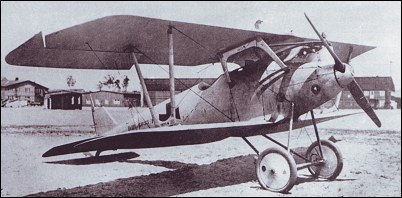 |
Pfalz D.III1917 |  |
| FIGHTER | Virtual Aircraft Museum / Germany / Pfalz |
 |
The Pfalz Flugzeug-Werke GmbH was established at Speyer-am-Rhein, Germany, in 1913 by the Everbusch brothers. The company initially licence built aircraft, such as the Morane-Saulnier Type H and Type L. During the early part of World War I Pfalz Flugzueg-Werke was involved in manufacturing the Moranes (under the A.I and E.I designations) and later L.F.G. Roland designs. The D.III, which appeared in the spring of 1917, was the first biplane fighter produced entirely by the Pfalz Flugzeug-Werke. Its design, by Rudolfo Gehringer, owed much to the Roland fighters that Pfalz had been building under licence, but it was slimmer and generally neater. The Pfalz D.III was robust and well built, with a semi-monocoque ply fuselage, and the wings were of unequal chord to give the pilot a better downward view. Other aircraft using this design technique almost always suffered a structural penalty, which Pfalz avoided by incorporating two spars in the lower wing. As a result, the Pfalz could be dived at higher speeds than contemporary German fighter types without the risk of structural failure, an attribute its pilots found very useful when making high-speed diving attacks on enemy observation balloons. The gap between the upper wing and the fuselage was kept to a minimum, giving the pilot a good all-round field of view. The prototype D.III was evaluated in June 1917. Very few modifications were found necessary, and the type was quickly cleared for production. To reduce drag, its twin Spandau machine guns were completely buried in the forward fuselage, with only the muzzles protruding. The D.III was followed into production by the D.IIIa, which had an uprated Mercedes engine and guns mounted on top of the fuselage, where they were easier to aim and service. The D.IlIa's wingtips were also more rounded. The D.III/IIIa was initially issued to home defence units in Bavaria in August 1917. By the end of the year 276 D.IIIs and 114 D.IIIas were in service, and from then on the former was gradually replaced by the latter, of which 433 were with frontline units in April 1918. Forty-six Jagdstaffeln (Jastas) received some D.III/IIIas, but only about a dozen were fully equipped with the type. Despite its robustness, the Pfalz does not seem to have been popular with many pilots, although some of Germany's leading air aces flew it. Part of the problem probably lay with its rate of climb, which was poor when compared with that of other German types such as the Fokker D.VII, with which the Pfalz was progressively replaced in the summer of 1918.
|  All the World's Rotorcraft | ||||||||||||||||||||||||||||||||||||||||||||||||||
 |

|